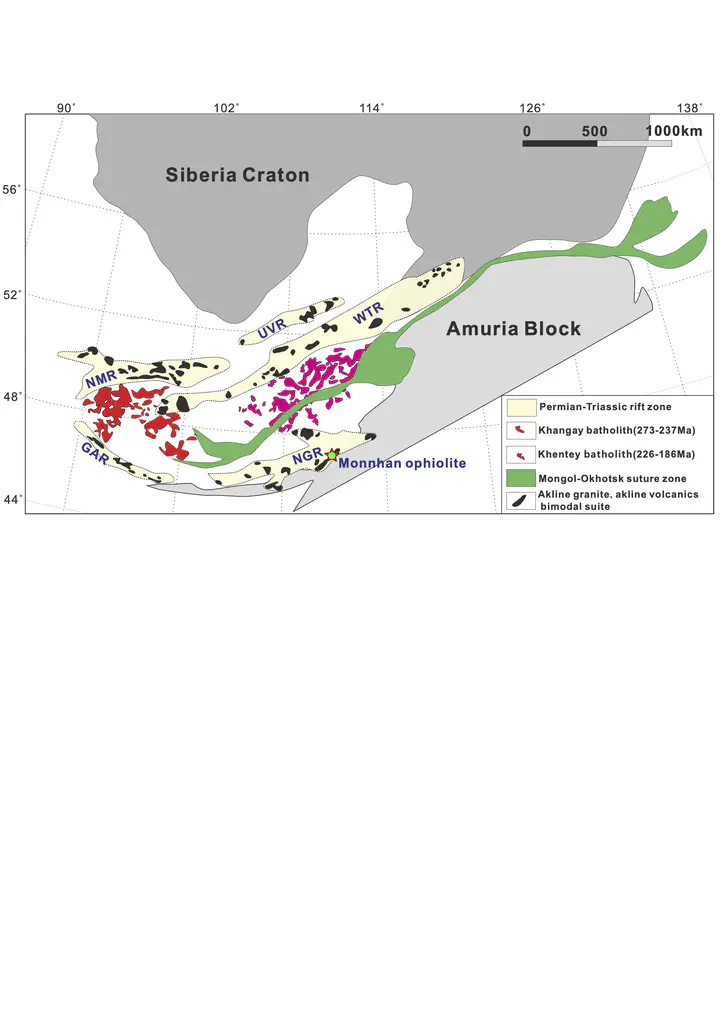Large-scale Permo-Triassic back-arc extensions of the Mongol-Okhotsk Ocean

Abstract
The Late Paleozoic–Mesozoic Mongol- Okhotsk orogenic belt marks the final aggregation of East Asia. The geodynamics of the Mongol-Okhotsk oceanic plate subduction are still poorly understood due to its curved orogenic architecture, complex kinematics, and the protracted active continent margin that developed during oceanic subduction. Here, we report the discovery of an ophiolite within the southern paleo-active margin of the Mongol-Okhotsk orogenic belt. The ophiolitic slices are composed of serpentinites, metagabbros, and metabasalts, and in- terleaved with deformed volcaniclastic rocks. Using zircon U-Pb dating, we determined an age of 253 ± 2 Ma for the metagabbro, which suggests that the ophiolite formed during the Late Permian. Geochemical data and geo- logic relationships indicate that this ophiolite formed in a back-arc setting. The contemporaneous granitic dikes (ca. 255 Ma) intruding the basalts of the ophiolite were likely formed by crustal anatexis during the back-arc exten- sion. Detrital zircon in sandstone associated with the ophiolite shows a prominent peak age of ca. 273 Ma that probably represents the sediments of the back-arc basin. Combining our discovery with the available data from the literature, we suggest that a >5000-km-long back-arc extension belt existed in the south- western segment of the Mongol-Okhotsk belt, which indicates a probable Western Pacific type active margin rather than the previously proposed Andean-type margin that formed during the Permo-Triassic period.